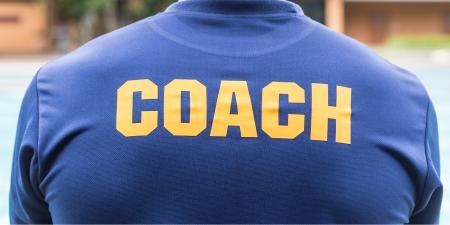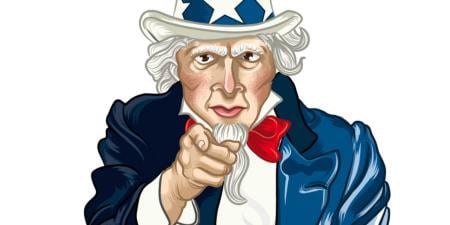Dennis Novack writes, “Despite broad endorsement of the biopsychosocial model by medical educators, United States medical education is predominantly biomedical in focus. Partly because of that biomedical focus, the United States health care system is in crisis” [1]. Because the biomedical model of disease has been the prevailing one in our lifetimes, it may appear that the biopsychosocial model of health is a new concept, at odds with the more widespread “magic bullet” approach to treatment. But, as we will see, medicine has been considering the interaction between disease processes and the patient’s life circumstances for a long time.
History is a most valuable teacher, the conveyer of much wisdom; learning about the evolution of ideas and the development of a discipline can show us much that is relevant in our time. The role of psychological factors in the onset of disease should not be viewed as anything new to the field of medicine. Indeed, we might more accurately see this as an extension of the wisdom of the physicians of long ago who taught the importance of first gaining a more comprehensive view of the patient than merely focusing on the symptoms or manifestations of disease. To Socrates is attributed the exhortation that “neither ought you to attempt to cure the body without the mind; and this…is the reason why the cure of many diseases is unknown…for part can never be well unless the whole is well” [2]. “It is far more important to know what person the disease has,” Hippocrates told us, “than what disease the person has” [3]. More than a thousand years after Hippocrates, this admonition came to play a significant role in the works of the physician and philosopher Galen, who made a decisive connection between temperament and disease [4].
Relevant concepts of health can be found in the teachings of twelfth-century ethicist and physician Moses Maimonides. Maimonides’s view of patient care was inspired by wisdom found in the pages of the Talmud and the teachings of Hippocrates, Aristotle, Galen, and others [5, 6]. Through the integration of such wisdom and by emphasizing the multidimensional nature of each patient, he added to the science of medicine the art of administering it [7]. Sidney Bloch describes Maimonides’s teaching thus: “whereas the study of a medical text is straightforward, the art of its application is intrinsically challenging. The doctor is faced with a particular patient, with a particular bodily constitution, and at a particular point in time” [5]. Instead of making the disease the main focus of treatment, the patient as a whole should occupy that central place. Maimonides cautions, for example, about the role of negative thoughts regarding either the future or the past in the exacerbation of symptoms; emphasizes that behavioral changes can add to the success of the treatment; and identifies social influences, both positive and negative, as important to proper treatment [8]. An integrated, multidimensional conceptualization of disease and patient care thus emerges in the teachings of Maimonides, which capture the essence of the biopsychosocial model [6].
The emerging germ theory of disease held the attention of Louis Pasteur and many of his protégés in the mid-nineteenth century. This was the foundation for the power of the biomedical model throughout most of the twentieth century. At the same time, though, one of Pasteur’s contemporaries, Claude Bernard, suggested that for the germ to grow the “terrain” of the body must be first prepared [9]. This proposition added an interactive dimension to the linear germ theory model. Indeed, it has been reported that, late in his life, Pasteur had arrived at a similar conclusion: he repeated to himself, even on his death bed, “Bernard avait raison. Le germe n’est rien, c’est le terrain qui est tout” (Bernard was right. The germ is nothing, the soil is everything) [9]. Decades later, in the early twentieth century, Hans Selye, the father of stress research, demonstrated how excessive stress just did that: it prepared “the terrain of the body” so that disease could grow [10].
Selye presented ample evidence that stress may act as a major contributor to a variety of disorders [10]. The importance of recognizing the interaction between the body and its surroundings that guided Selye’s work was earlier proposed by another giant in the field of physiology, Walter B. Cannon, whose seminal 1932 work, The Wisdom of the Body, shed new light on the dynamic interactions between the body and its surroundings [11]. Cannon proposed the existence of homeostasis—a variety of biochemical changes through which the body has the capability to maintain its internal integrity in spite of external changes such as heat and cold. Yet maintaining homeostasis in the face of excessive external demands may result in the derailment of vital physiological functions, contributing to breakdown and disease [10]. Fifty years later, a more expanded and comprehensive concept of this phenomenon suggested changes in behavior occurred to cope even with anticipation of demands (physical or psychological), perhaps contributing to maladaptive behaviors and the ensuing pathophysiology, and termed the mechanism allostasis [12].
Another important contribution to the development of a broader understanding of medicine took place in the early decades of the twentieth century, when the role of the unconscious and personality factors were demonstrated in the etiology of many disorders in what came to be known as psychosomatic medicine. Psychosomatic medicine introduced an indispensable dimension to the practice of medicine, especially in terms of better diagnosing idiopathic conditions that were refractory to a variety of interventions [13].
In the early 1920s, the pioneering work of German neurologists Oscar Vogt, Johannes Schultz, and Wolfgang Luthe provided us with an in-depth understanding of psychophysiology that demonstrated how mental states can directly affect physiological processes [14]. Such discoveries became the very essence of a psychophysiological self-regulation technique known as autogenic training that is taught in many European medical schools as an adjunctive treatment for a variety of medical disorders [15]. Autogenic training focuses on reducing the activity of the central nervous system through the repetition of phrases that promote bodily relaxation. Decades of research have provided consistent evidence that this and other self-regulation techniques can have clinically positive effects on conditions such as hypertension and certain forms of headaches and may be helpful in the management of chronic conditions, such as chronic pain [15]. Such discoveries brought forth a better understanding of stress-related disorders and the role of psychological states in better managing them.
This brings us to the contributions of the physician and visionary George Engel [16] and the now commonly recognized biopsychosocial model of medicine. Engel’s conceptualization adds the critical psychological and social factors to the traditional, linearly conceived biomedical model. Engel wrote that “the biopsychosocial model is a scientific model constructed to take into account the missing dimensions of the biomedical model. To the extent that it succeeds it also serves to define the educational tasks of medicine” [17].
This model brings together decades of empirical research that point to the need for the development of a more integrated, system-oriented view of health and disease. It is important to note that the biopsychosocial model does not contradict the time-tested biomedical model; it simply adds to it the missing psychological and social variables that are essential to effective diagnosis and treatment. These psychosocial variables offer a more individualistic, less mechanical approach to patient care. While the biological mechanisms may appear nearly identical from person to person, emotions, cognitive factors, and the presence or absence of social support add uniqueness to each patient. Considering these factors can lead to better understanding of the patient’s condition and to interventions that are likely to expedite the amelioration of symptoms and, more importantly, promote well-being. As Borrell-Carrio and colleagues wrote, “George Engel’s most enduring contribution was to broaden the scope of the clinician’s gaze. His biopsychosocial model was a call to change our way of understanding the patient and to expand the domain of medical knowledge to address the needs of each patient” [18].
Conclusions
Although the premises of the biopsychosocial model are, indeed, very sound, its potential has not been fully realized, particularly in medical training. According to Novack, most medical schools dedicate only a handful of hours to training in the biopsychosocial model [1]. This despite the steady stream of studies that have provided consistent support for the immense benefits of this integrative approach to the practice of medicine. Time and again, great medical minds proposed a dynamic, integrated approach to the diagnosis and treatment of the patient. Above all, and most importantly, they warned against the dangers of fragmenting the patient into parts, for, in so doing, symptom amelioration becomes the focus of treatment, the integrity of the patient is compromised, and the healing process is derailed—the patient becomes a mechanical structure in need of repair. Repair and healing are not one and the same; the former focuses on the “broken” parts and proceeds to attend to such parts in isolation, while the latter promotes integration of all the systems that are critical in achieving well-being and reestablishing health and healthy function.
References
-
Novack DH. Realizing Engel’s vision: psychosomatic medicine and the education of physician-healers. Psychosom Med. 2003;65(6):925.
-
Plato. Charmides. Plato: The Collected Dialogues. New Jersey: Princeton University Press; 1989: 103.
-
Alcauskas M, Charon R. Right brain: reading, writing, and reflecting. Making a case for narrative medicine in neurology. Neurology.2008;70(11):891.
-
Galen. On the Natural Faculties. Brock AJ, trans. Cambridge, Massachusetts: Harvard University Press; 1991.
-
Bloch S. Moses Maimonides’ contribution to the biopsychosocial approach to clinical medicine. Lancet. 2001;358(9284):831.
-
Hulkower K. Maimonides: ideas on biopsychosocial medicine. Einstein Q J Biol Med. 1988;6:26-28. Accessed March 15, 2013.
-
Bratton FG. Maimonides: Medieval Modernist. Boston: Beacon Press; 1967.
- Simon SR. Moses Maimonides: medieval physician and scholar. Arch Intern Med. 1999;159(16):1841-1845.
-
Ornstein R, Sobel D. The Healing Brain. New York: Simon & Schuster; 1987: 29.
-
Selye H. The Stress of Life. New York; McGraw-Hill; 1984.
-
Cannon WB. The Wisdom of the Body. New York: W.W. Norton; 1963.
- McEwen BS. Allostasis and allostatic load: implications for neuropsychopharmacology. Neuropsychopharmacology. 2000;22(2):108-124.
-
Levenson D. Mind, Body, and Medicine: A History of the American Psychosomatic Society. New York: Williams & Wilkins; 1994.
-
Schultz JH, Luthe W. Autogenic Therapy (vol. 1). New York: Grune & Stratton; 1969.
-
Sadigh MR. Autogenic Training: A Mind-Body Approach to the Treatment of Chronic Pain Syndrome and Stress Related Disorders.2nd ed. Jefferson, North Carolina: McFarland; 2012.
- Engel GL. The need for a new medical model: a challenge for medicine. Science. 1977;196(4286):129-136.
-
Engel GL. The clinical application of the biopsychosocial model. Am J Psychiatry. 1980;137(5):535.
-
Borrell-Carrio F, Suchman AL, Epstein RM. The biopsychosocial model 25 years later: principles, practice, and scientific inquiry. Ann Fam Med. 2004;2(6):581.



